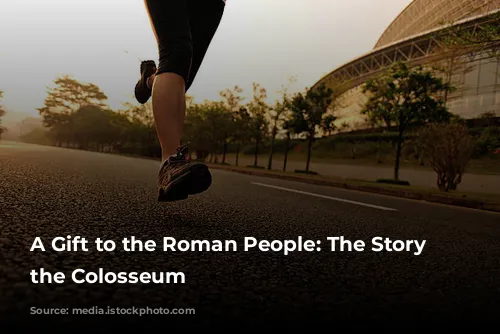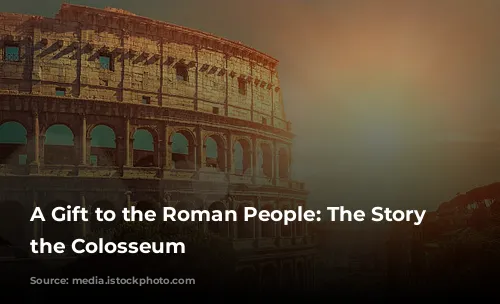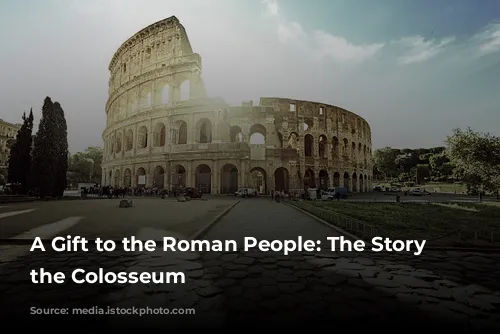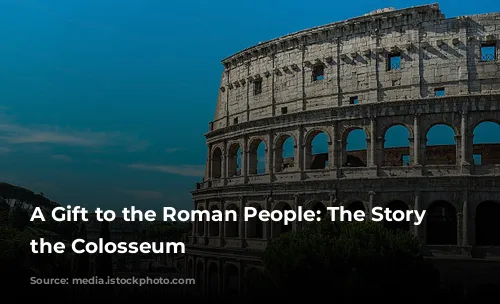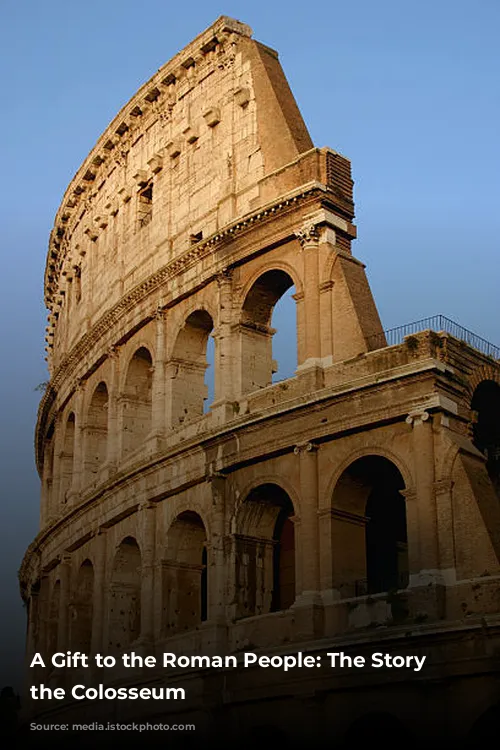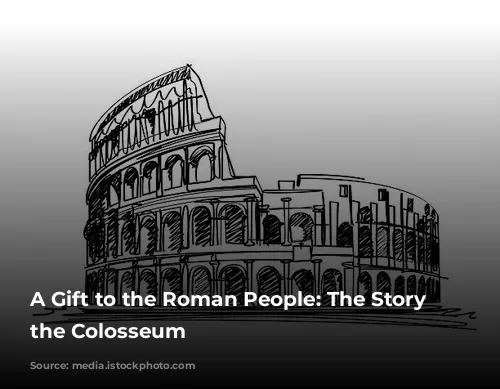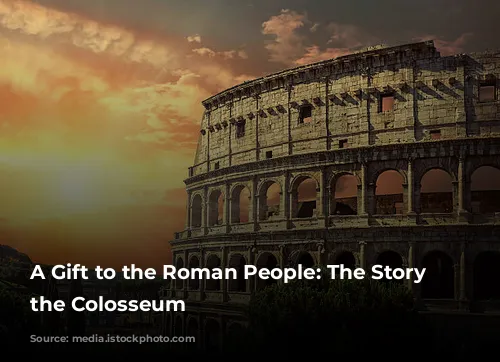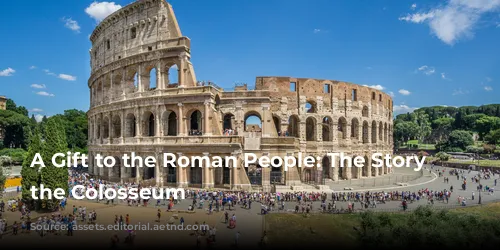The Colosseum, a massive stone amphitheater standing tall just east of the Roman Forum, is a symbol of Rome’s grandeur and history. Built around A.D. 70-72, it was a gift to the Roman people from Emperor Vespasian of the Flavian dynasty. This architectural marvel, originally known as the Flavian Amphitheater, was inaugurated by Vespasian’s son Titus in A.D. 80 with 100 days of spectacular games, including thrilling gladiatorial combats and exciting wild animal fights. While time has taken its toll on the Colosseum, leaving only a third of its original structure intact, the arena remains a powerful reminder of Rome’s past and a popular tourist destination.

A New Era After Nero’s Reign
The construction of the Colosseum is intertwined with the tumultuous years following the reign of Emperor Nero. After Nero’s suicide in A.D. 68, Rome experienced a period of instability, with four different emperors taking the throne in a single year. Vespasian, the fourth emperor, ended this tumultuous period and ruled for 10 years, ushering in the Flavian dynasty.
The Flavian emperors, including Titus and Domitian, sought to restore order and stability to Rome. They aimed to lessen the extravagance that had become synonymous with the Roman court, strengthen the authority of the Senate and focus on improving public welfare. It was during this time that the seeds for the Colosseum were planted.
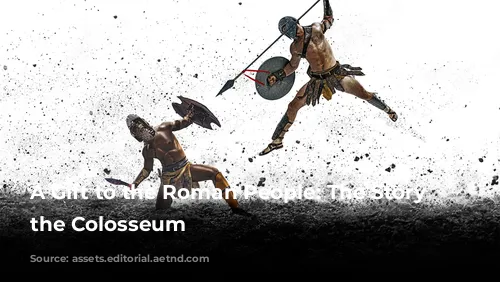
A Symbol of Power and Entertainment
Vespasian recognized the need for a new amphitheater, a place where the Roman people could gather for entertainment and spectacles. He decided to build this grand structure on the site of Nero’s opulent Golden Palace, which was destroyed by fire in A.D. 64. The land, once reserved for a single man’s extravagant tastes, would now be dedicated to the entertainment of the Roman people.
Construction began on the Colosseum around A.D. 70-72 and was completed under the reign of Titus. The arena, built in a relatively short period of time for a structure of such immense scale, was inaugurated in A.D. 80 with a grand 100-day festival. Titus, a beloved ruler, had won the hearts of his people with his dedication to recovery efforts following the devastating eruption of Mount Vesuvius in A.D. 79. His reign, though short, left a lasting legacy, and the Colosseum stands as a testament to his dedication to his people.
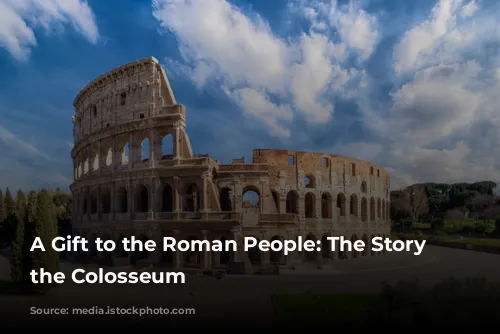
A Masterpiece of Roman Architecture
The Colosseum was a testament to the Romans’ engineering prowess. Measuring a staggering 620 by 513 feet (190 by 155 meters), it was the largest amphitheater in the Roman world. Unlike previous amphitheaters, which were carved into hillsides, the Colosseum was a freestanding structure made of stone and concrete, a marvel of Roman construction. Its exterior featured three levels of arched entrances, a total of around 80, supported by semi-circular columns. Each level displayed a different architectural order: the simple Doric order at the base, followed by the Ionic, and finally, the ornate Corinthian order at the top, showcasing the diversity and elegance of Roman architecture.

A Place of Spectacle and Entertainment
The Colosseum was a place where the Roman people could come together to experience a variety of entertainment, including gladiatorial combats, hunts, wild animal fights, and even mock naval battles, for which the arena was said to be flooded with water. It had seating for more than 50,000 spectators, arranged according to their social standing. The audience was protected from the harsh Roman sun by awnings that were unfurled from the top of the structure. These spectacles were a testament to the Roman Empire’s wealth and power, and the Colosseum was the stage for these grand displays.
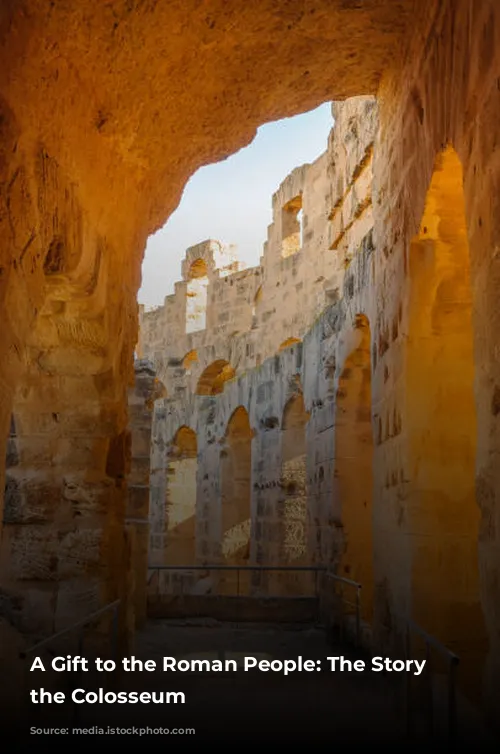
A Symbol of Change and Decay
The Colosseum witnessed centuries of grand spectacles, but as the Western Roman Empire faced its own decline, the arena fell into disuse. The demand for gladiatorial combats waned, and the era of large public entertainment came to a close in the 6th century A.D. The arena had already suffered damage from natural disasters like lightning and earthquakes.
The Colosseum was then abandoned and used as a source of building materials for other structures, including the cathedrals of St. Peter and St. John Lateran, the Palazzo Venezia and fortifications along the Tiber River. This period saw the Colosseum transformed from a center of entertainment to a source of materials, a testament to the ever-changing nature of history and the power of time.
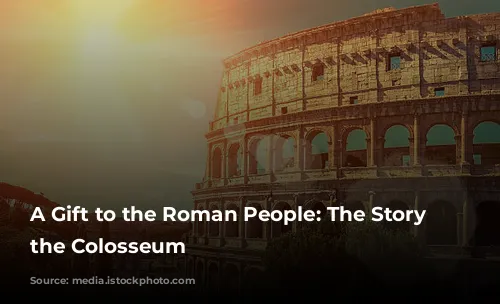
A Restoration and a Legacy
The Colosseum, a symbol of Roman power and a witness to the rise and fall of an empire, stands as a reminder of the impermanence of all things. Beginning in the 18th century, various popes recognized the importance of preserving the Colosseum as a sacred Christian site. Despite the passage of time and the loss of nearly two-thirds of its original structure, the Colosseum remains a popular destination for tourists from around the world.
Restoration efforts began in the 1990s and continue to this day. The Colosseum, despite its decay, stands as a symbol of the enduring power of the Roman legacy and a testament to the resilience of human creativity. Even in ruin, it stands as a reminder of the splendor of the Roman Empire, a place where emperors, gladiators, and the Roman people gathered to celebrate their culture, their power, and their shared experience.
